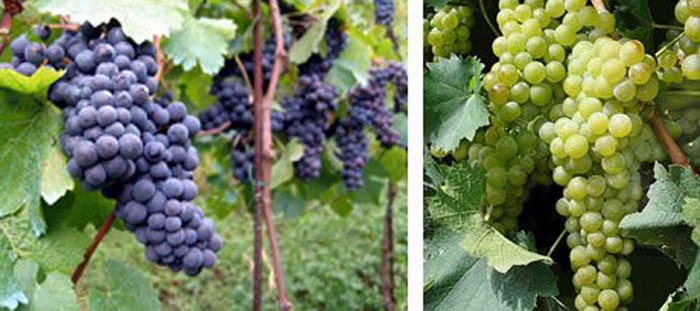Of the great wine-producing regions in the U.S., Napa and Sonoma no doubt come to mind. Knowledgeable enthusiasts might even add Walla Walla Valley in Washington and the Finger Lakes in New York to their list. Virginia’s countryside, however, is all too often overlooked. That’s a shame, because Virginia’s vintners have been working hard to express the region’s unique terroir—the effect of the local climate, soil, and topography on the character of a wine. And as the 2011 Wine Bloggers’ Conference demonstrates, those producers have been fabulously successful.
From July 22-24, wine bloggers and writers, new media innovators, and wine industry leaders from around the country converged on Charlottesville, VA to sample offerings from all six of Virginia’s wine-making regions: the Shenandoah Valley, Eastern Shore, North Fork of the Roanoke River, George Washington Birthplace, Rocky Knob, and Monticello. Conference participants were treated to a welcoming reception at Monticello. As the organizing director, Kurt Burkhart, put it, “I can’t imagine a better setting to watch the beautiful sunset than over the Blue Ridge Mountains. The Jeffersonian connection was most intriguing to this group.”
Though Virginia wines only recently catapulted onto the world stage, the state’s viticulture is steeped in history. Citizens of colonial Jamestown placed such a high value on wine production that each male was required to tend at least 10 grape vines. Land dedicated to these vineyards, however, was soon converted to host the much more lucrative cash crop, tobacco. Then, at his home at Monticello, Thomas Jefferson sought to realize the promise of Virginia wines. Unfortunately, although he actively studied and cultivated European grapes for over 30 years, Jefferson’s vineyards never produced a single bottle of wine.
In the 1820s, Virginia vintners began experimenting with wines made from muscadines, or Native American grapes. The grapes proved to be the key to Virginia’s success when, in 1873, a Virginia Norton wine was named “best red wine of all nations” at the Vienna World’s Fair and received a gold medal at the Paris World’s Fair in 1889. When Prohibition came into effect, however, Virginia’s wine production was halted and had been slow to recover.
Today, however, Virginia viticulture is flourishing! The state now boasts nearly 200 wineries, nearly all of which are relatively small holdings and operated by their founding families. As one commentator put it, “Virginia is not just a producer of wine, but a wine region,” characterized by an “unparalleled sense of history, magnificent scenery, a burgeoning food scene, and first class facilities.” Travel and Leisure magazine’s Bruce Schoenfeld even declared Virginia one of five up-and-coming wine regions (along with Spain, Italy, Chile, and New Zealand) that “should be on the must-visit list of any adventurous wine traveler.”
In an effort to support Virginia’s wineries, policymakers are expanding state support for vineyards as well as other types of agriculture. The Virginia Wine Board recently released a study that found vineyards to be the only growing agricultural sector in the Commonwealth and pointed to it as a critical piece of Virginia’s local food-shed. Further, Virginia wineries have become a major source of agritourism, attracting over one million visitors each year. In an effort to continue to promote this trend, the Virginia state legislature recently enacted a tax credit that would cover up to 25 percent of the cost of certain equipment and materials up to $250,000 per year.
This incredible growth is due in part to the climate as well as availability of cheap land relative to other major wine-producing regions. Perhaps it’s time to revisit your dreams of someday owning and operating a vineyard – or at least producing your own vino della casa…
The affiliates of Field Sport Concepts have a long and distinguished history of designing world-class working landscapes. With expertise in master planning and conservation finance strategies, we will work with you to design an agricultural or viticultural practice and find ways to assist its financial well-being. So, whether you wish to re-envision and enhance an existing agricultural operation or establish a brand new vineyard, we have the tools to make your goals a reality.

